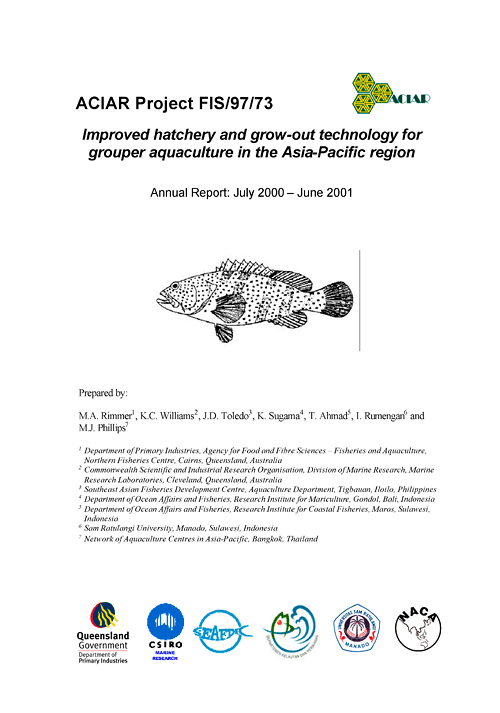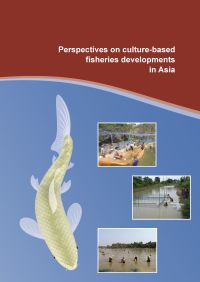Improved hatchery and grow-out technology for grouper aquaculture in the Asia-Pacific region: Annual report 2000-2001 ACIAR Project FIS/97/73
26 July 2004 | M.A. Rimmer, K.C. Williams, J.D. Toledo, K. Sugama, T. Ahmad, I. Rumengan and M.J. Phillips | 882 Downloads | .pdf | 396.92 KB | Australia, Hatchery and nursery, Indonesia, Marine finfish, Philippines
Aquaculture of high value finfish species, such as groupers, is an industry of increasing importance throughout the Asia-Pacific region, including Australia. The development of large and affluent markets for live reef fish, particularly in Hong Kong and southern China, has increased pressure on wildstock resources. In many areas the demand for live reef fish, and the profitability of this trade, has encouraged overfishing and the use of destructive fishing practices, such as the use of sodium cyanide to stun'' reef fish for capture by divers.
Aquaculture of high value reef fish species can potentially supply product to the live reef fish markets, as well as other regional and domestic markets. The development of aquaculture technology for these species will not only support an economically beneficial aquaculture sector, but will also contribute to reducing pressure on wild stocks.
Currently, the major bottlenecks to increased aquaculture production of groupers are the generally poor, and highly variable, survival in larviculture, and the limited sources of trash fish for grow-out. The ACIAR project addresess these issues by collaborating with research and development organisations in Indonesia and the Philippines to carry out priority grouper research to improve larviculture and to develop cost-effective grow-out diets of low fish content.
An additional objective of the project is to support, through the Network of Aquaculture Centres in Asia-Pacific, more effective dissemination of research results arising from the project activities, and to promote greater collaboration and information exchange among centres in Asia involved in grouper aquaculture research and development.
Creative Commons Attribution.

